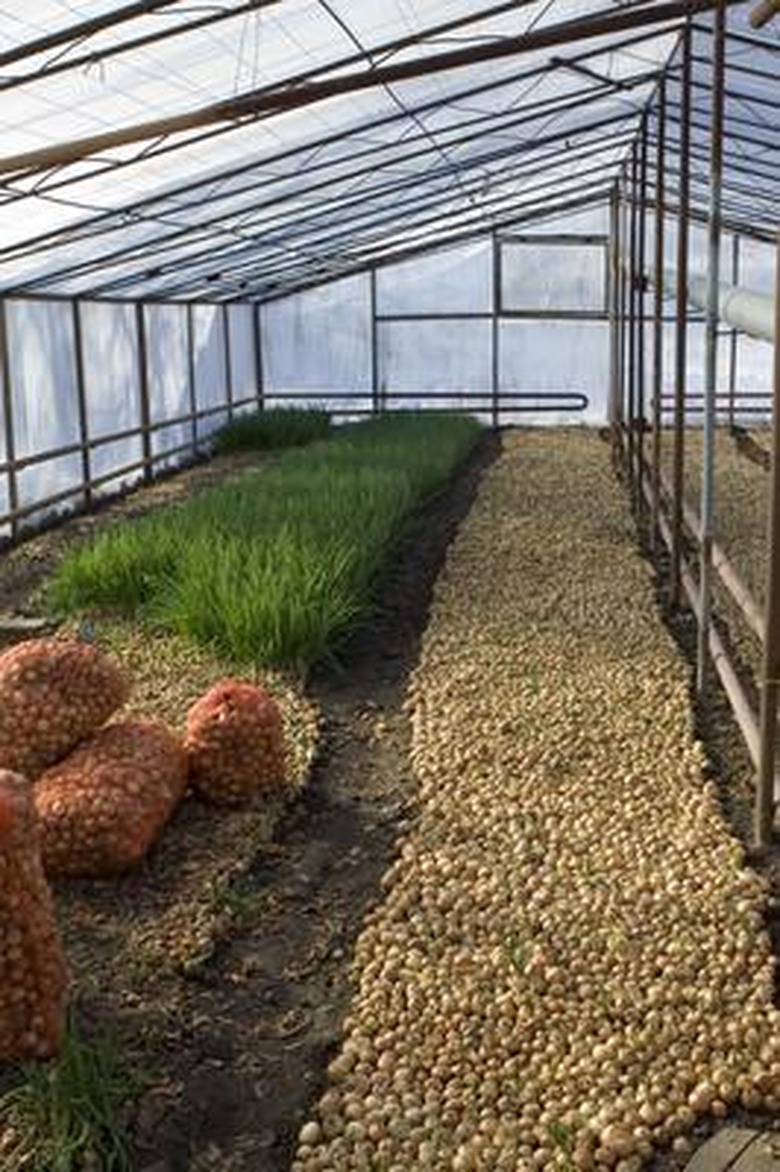How To Prepare The Ground For A Greenhouse
Things Needed
- Wooden stakes
- Rake
- Shovel
- PVC pipe
- Professional-grade landscape fabric
- Gravel
- Compost
A greenhouse is used to either grow plants in harsh weather conditions, to propagate plants or to start seedlings for later planting outdoors. They are becoming popular as more people learn the benefits of growing their own fresh food. If building more than one greenhouse, space them at a distance equal to one and one-half times their height to prevent one greenhouse from shading the other. A greenhouse can be as simple as a lean-to attached to the south side of a home or as sophisticated as a 100-foot building with automated climate and light conditions.
Step 1
Designate the area where the greenhouse is to be located. Give your greenhouse an east-to-west orientation to prevent one side of the greenhouse from shading the other side as the sun moves across the sky. The site must be in full sun to take advantage of sunlight during the winter months. Use stakes to designate where the corners of the greenhouse will be located.
- A greenhouse is used to either grow plants in harsh weather conditions, to propagate plants or to start seedlings for later planting outdoors.
- Give your greenhouse an east-to-west orientation to prevent one side of the greenhouse from shading the other side as the sun moves across the sky.
Step 2
Remove all rocks and debris from the proposed greenhouse site. If necessary, build up the site so water drains away. Level the area that will be the inside of the greenhouse using a rake and shovel. It does not need to be perfectly level, because your footings or foundation will be leveled before greenhouse construction begins–you can make minor adjustments at that time. If your site is located on a slope, you may need professional help with earth-moving equipment to level the site.
Step 3
Mark off all areas where water lines and other utilities will run. For convenience, lines can run underground through a 1- to 2-inch wide PVC pipe. If you decide to run utility lines through a PVC pipe, you need to lay the pipe so the lines are run under the outer wall of the greenhouse. Set the PVC pipe in place after leveling the site. The length of the PVC pipe depends on the size of your greenhouse and the ultimate location of your utility outlets. Bury it deep enough so it easily goes under the foundation footings.
- Remove all rocks and debris from the proposed greenhouse site.
- If you decide to run utility lines through a PVC pipe, you need to lay the pipe so the lines are run under the outer wall of the greenhouse.
Step 4
Add footings for the foundation around the edge of the designated greenhouse area to anchor the walls of the greenhouse. This may be done with cement or 4-by-4 pieces of treated lumber. If you choose cement, place anchor bolts into the top of the cement and attach wood. A typical greenhouse frame is much easier to attach to wood than cement because there is more flexibility where you may attach the uprights. You must anchor the walls to prevent damage from heavy wind and rain.
Step 5
Designate where paths and work spaces will be within the greenhouse by marking off the areas and driving wooden stakes into the ground. Cover the ground where paths and work spaces are located with professional grade landscape fabric. Place gravel over these areas. The landscape fabric helps prevent weeds from growing through the gravel and allows water to drain. Areas where plants will be grown should be improved with compost and other amendments.
- Add footings for the foundation around the edge of the designated greenhouse area to anchor the walls of the greenhouse.
- Designate where paths and work spaces will be within the greenhouse by marking off the areas and driving wooden stakes into the ground.
